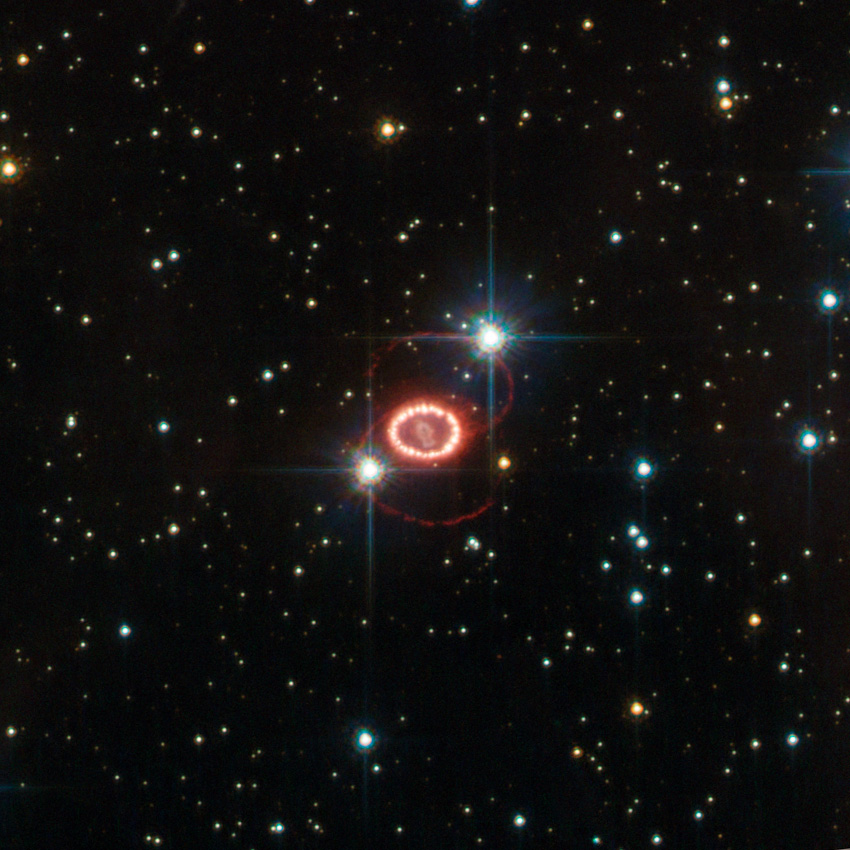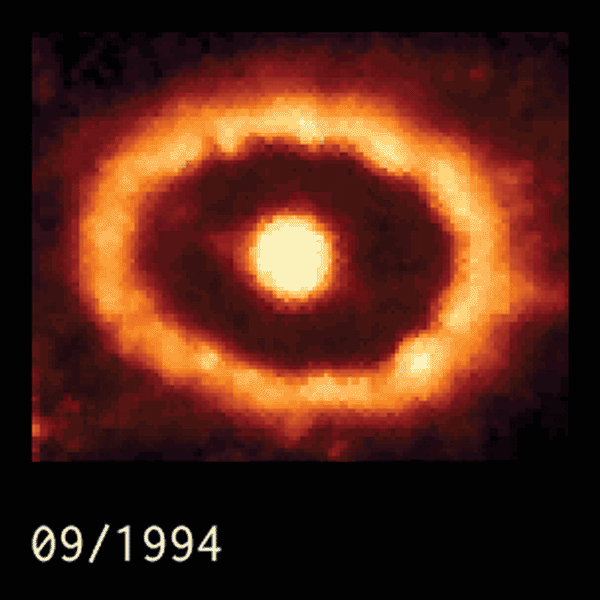 |
| The remnant of SN 1987A. Credit: ESA/Hubble, NASA (link) |
One particularly famous supernova is SN 1987A, so named because it was the first (A) supernova (SN) observed in the year 1987. This is the brightest and closest supernova to go off in modern times. The event went off in the Large Magellanic Cloud, our nearby satellite galaxy which is visible from the Southern Hemisphere. The distance is approximately 51.4 kiloparsecs from Earth or 168,000 light-years (remember your distance units?). It was close enough, and in a well studied region, that we have identified the progenitor star before it went supernova- it was a blue supergiant star.
At that time, neutrino detectors had recently been constructed on Earth and this is the first, and thus far only, time in which neutrinos have been detected from an astronomical source other than the Sun. About 2 dozen neutrinos were detected from SN 1987A and, from what I understand, these have resulted in hundreds of papers concerning neutrino and supernova astronomy. This makes SN 1987A one of the most famously studied supernova of all times.
But what are neutrinos? Neutrinos are extremely tiny, electrically neutral particles that barely interact with anything- trillions of neutrinos pass through your body each second and yet none of them interact or affect your body in any way! These elusive particles are produced in nuclear processes such as radioactive decay and nuclear fusion. Well, fusion is exactly what's going on inside of stars that allows them to shine and hold them up against their own gravity. Neutrinos are also a natural by-product of supernova and its expected that the energy carried by neutrinos exceeds the energy the supernova emits as light (approximately all the light the Sun will produce over its entire lifetime!) by a factor of 100 or so.
Why all this talk about SN 1987A? The Astronomy Picture of the Day (APOD) has been putting up cool images on SN1987A for the past few days. The first is depicted at the beginning of this post. Here is the second:
 |
| Animation of the core of SN1987A from 1994 to 2009. Credit: Hubble Space Telescope, NASA, ESA; Video compilation: Mark McDonald (link) |
This very cool animation depicts how the central source has dimmed and, more importantly, how material from that source has reached and impacted the ring of material around the source and caused it to glow. The origin of the ring, this small one (whose diameter is about 1.3 lightyears) and the larger figure-8 pattern on the other image, still remains a mystery. These rings existed BEFORE the supernova and have been lit-up by the light and particles that have reached them.
I'm no supernova astronomer, but even I think SN 1987A is cool and I'm glad these really neat images are out there for the public (and scientists) to enjoy.
No comments:
Post a Comment
Note: Only a member of this blog may post a comment.